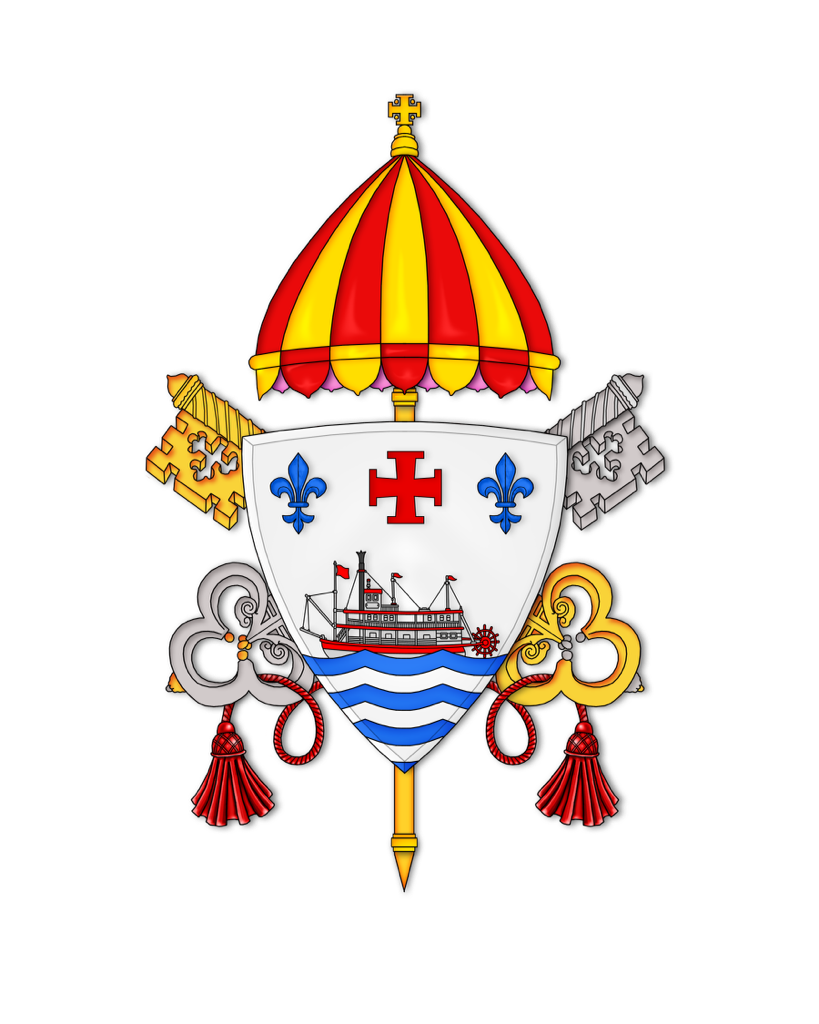Our Lady of Lourdes
Feast Day February 11
By Charles Garrity
Our Lady of Lourdes is a Roman Catholic title of the Blessed Virgin Mary venerated in honor of the Marian apparitions that reportedly occurred in 1858 in the vicinity of Lourdes in France. The first of these is the apparition of 11 February 1858 when 14-year old Bernadette Soubirous told her mother that a “lady” spoke to her in the cave of Massabielle (a mile from the town) while she was gathering firewood with her sister and a friend. On 11 February 1858, Soubirous went with her sister Toinette and Jeane Abadie to collect some firewood and bones in order to buy some bread. After taking off her shoes and stockings to wade through the water near the Grotto of Massabielle, she said she heard the sound of two gusts of wind (coups de vent), but the trees and brushes nearby did not move. A wild rose in a natural niche in the grotto, however, did move. “I came back towards the grotto and started taking off my stockings. I had hardly taken off the first stocking when I heard a sound like a gust of wind. Then I turned my head towards the meadow. I saw the trees quite still; I went on taking off my stockings. I heard the same sound again. As I raised my head to look at the grotto, I saw a lady dressed in white, wearing a white dress, a blue girdle and a yellow rose on each foot, the same color as the chain of her rosary were white… From the niche, or rather the dark alcove behind it, came a dazzling light.”
The next day, she said the apparition asked her to dig in the ground and drink from the spring she found there. This made her disheveled, and some of her supporters were dismayed; but this act revealed the stream that soon became a focal point for pilgrimages. Although it was muddy at first, the stream became increasingly clean. As word spread, this water was given to medical patients of all kinds, and many reports of miraculous cures followed. Seven of these cures were confirmed as lacking any medical explanations by Professor Verges in 1860.
In subsequent visitations she heard the lady speak to her, saying Que soy era Immaculada Concepciou (I am the Immaculate Conception), and asking that a chapel be built there. At first ridiculed, questioned, and belittled by Church officials and other contemporaries, Soubirous insisted on her vision. Similar apparitions of the alleged “Lady” were reported on seventeen occasions that year until the climax revelation of Our Lady of the Immaculate Conception took place. Eventually, the Church believed her. In 1862, Pope Pius IX authorized Bishop Bertrand-Severe Laurence to permit the veneration of the Blessed Virgin Mary in Lourdes. On 3 July 1876, the same Pontiff officially granted a Canonical Coronation to the image that used to be in the courtyard of what is now part of the Rosary Basilica. The image of Our Lady of Lourdes has been widely copied and reproduced, often displayed in shrines and homes, often in garden landscapes. Soubrious was later canonized as a Catholic saint by Pope Pius IX in 1933.
The feast day of Our Lady of Lourdes is February 11. St. Mary Basilica has a stained-glass window in honor of Our Lady of Lourdes and St. Bernadette.
Return to The Saints of the Basilica

Gift of Theodore & Emma Wensel
Stain glass window in St. Mary Basilica
The Basilica of Saint Mary
105 South Union Street
Natchez, MS 39120

Church Office @Family Life Center
613 Main Street
Natchez, MS 39120
601.445.5616 | Email